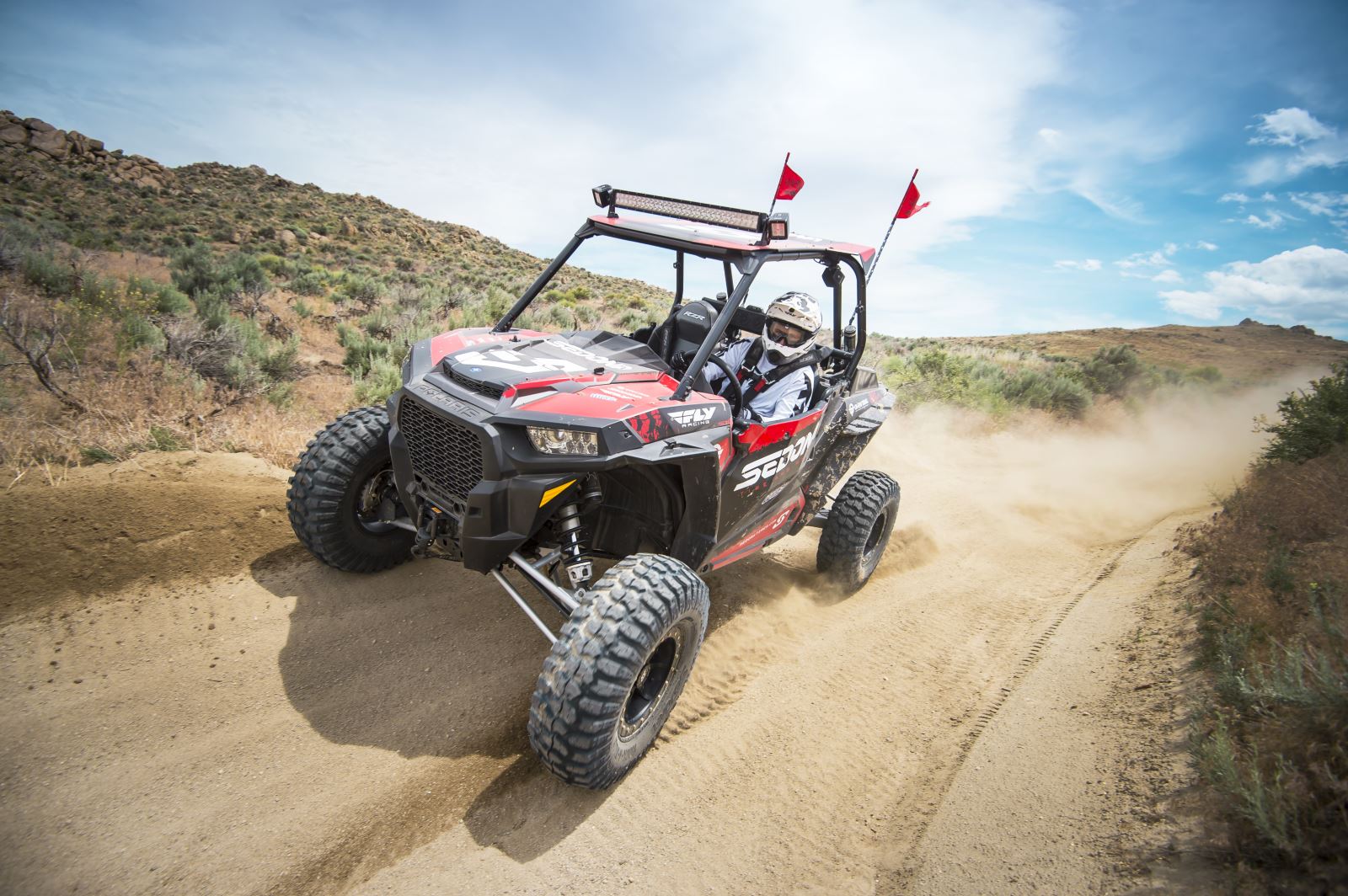TIRE TECHNOLOGY

Now let’s review some tire technology. All ATV and UTV tires should have a specific ply-rating and load rating indicated on the sidewall. The tire should also indicate a specific max PSI needed to achieve those indicated ply and load ratings. All three (ply-rating, load rating and PSI) are connected and need to be taken into consideration when determining what air pressure to use. Ply-rating is just that: a rating. It doesn’t mean your tire will actually have 4, 6, 8 or even 10 plies.
The max load rating of a tire and the corresponding max PSI can be a better indicator of a tire’s overall performance potential or limitations. When tire companies build a tire they build it to pass certain load rating specifications. How a tire is constructed, and the type and amount of material used in the tire, all determine how much air pressure is needed to achieve the specified load rating. That in turn also helps indicate the relative ply-rating or implied strength of the tire.
For example, a 6 ply-rated tire with a load rating of say 600 lbs., could have a recommended max air pressure of 8 to 20 PSI or even higher, depending on how the tire is built. This means you would need to use the recommended 8 or 20 PSI in that tire to achieve the indicated max load rating of 600 lbs. and the corresponding 6 ply-rating (implied strength).
Running correct air pressure is SO important because the max load rating and ply-ratings are linked to specific max air pressure. So what does it mean when you run air pressure lower than what is recommended on the sidewall of the tire? Yep, you guessed it: it reduces the max load-rating and corresponding ply-rating or implied strength characteristics of the tire. Running the wrong air pressure (too low or too high) is one of the leading causes of premature tire wear or total tire failure. Under-inflated tires can run much higher temperatures due to carcass flex which causes friction and can become more susceptible to carcass damage from impact with objects on the trail, i.e., sidewall punctures.
OVER-INFLATED TIRES

